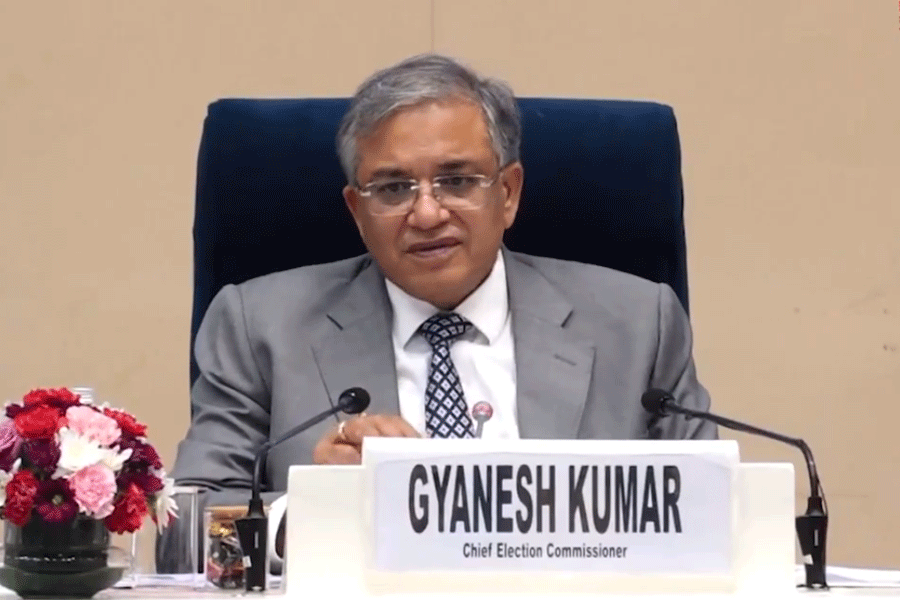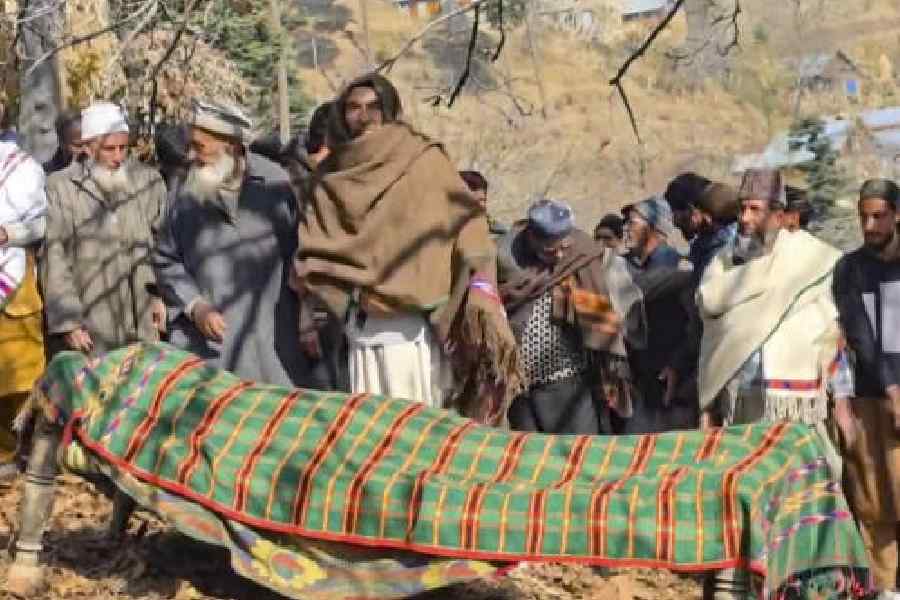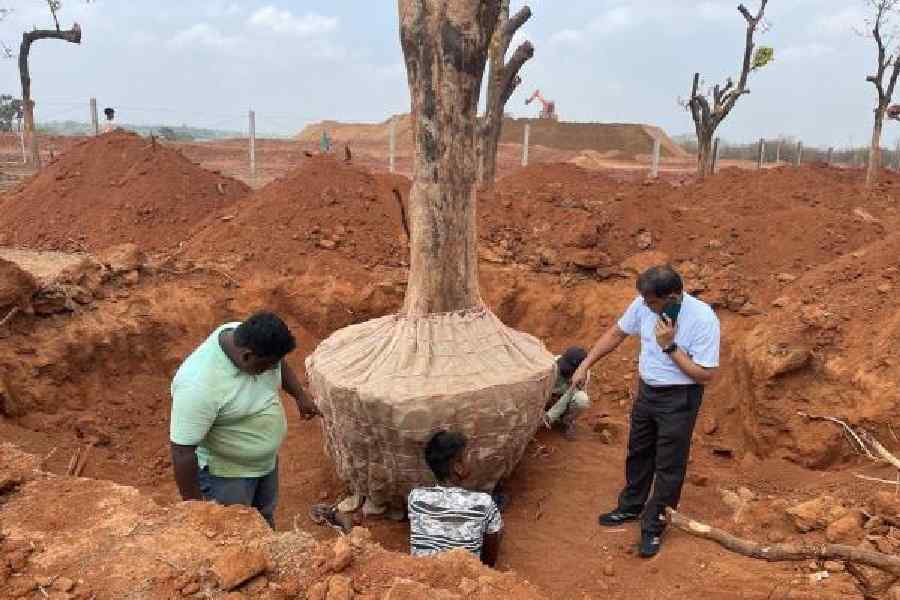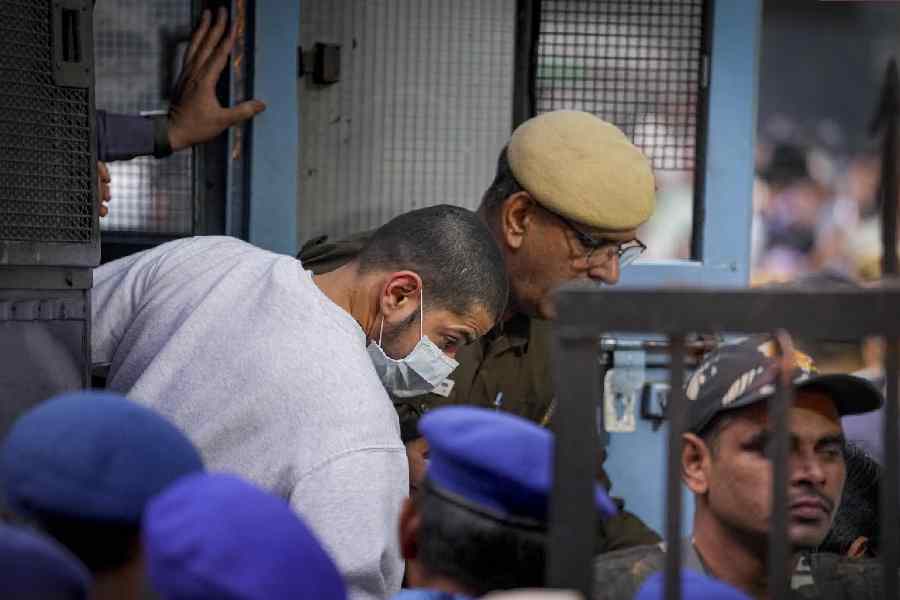 |
| ?India under Indira Gandhi was also probably the arena for more KGB active measures than anywhere else in the world... Suitcases full of bank notes were said to be routinely taken to the Prime Minister?s house? |
London, Sept. 20: The KGB had “contacts” with CPM leaders in Bengal after the party’s victory in the Assembly elections in June 1977, it is claimed in the book on Soviet intelligence written by the Cambridge historian, Professor Christopher Andrew.
There is no suggestion, however, that the CPM leaders were bought off in the way that CPI politicians and front organisations had apparently been paid.
The book, The Mitrokhin Archive II: The KGB and the World, due to be published shortly by Penguin India in India, has been written by Andrew on the basis of documents brought by a senior KGB archivist, Vasili Mitrokhin, when he defected to the West in 1992.
The book, which has now been read by The Telegraph, has two chapters, 17 and 18, devoted to “The Special Relationship with India”. Part I is sub-titled “The Supremacy of the Indian National Congress”, while Part II analyses “The Decline and Fall of Congress”.
The book deals with KGB operations in the Third World. While India, especially under Indira Gandhi, merited the most attention from the KGB because the country was considered the most crucial to Soviet interests, Chapter 19 deals with Russian intelligence-gathering in “Pakistan and Bangladesh”.
The Indian chapters don’t make for easy reading, filled as they are with Russian acronyms for KGB departments and code names for agents and informers.
 |
| The KGB headquarters in Moscow |
Andrew’s problem as a historian and a scholar is that he did not have access to original KGB documents but only to what Mitrokhin claimed were copies.
That Mitrokhin spent years copying documents suggests he must have had an idea of one day making use of them, possibly when he defected. He came out with six boxes but it is safe to assume he took out what he thought would please those who would debrief him in the West. Mitrokhin cannot be questioned by independent journalists since he died last year.
In India, the book will be read anxiously by some readers who will hope they haven’t been outed as KGB informers. They needn’t worry. Precious few names are mentioned and when they are, it is usually of people who are dead ? this is legally safe since the dead cannot be libelled.
 |
| “According to a KGB report, an investigation into Promode Das Gupta, who became secretary of the West Bengal Communist Party in 1959, concluded he had been recruited by the IB in 1947” |
What comes across is that the KGB was mind-numbingly bureaucratic. It also does not seem to have been very good at its work. It is hard to compare it with the CIA, which must have been equally active in India, because Andrew’s concern in this book is only with Soviet intelligence-gathering.
At the end, the reader is left with the impression that some Indians may have received KGB handouts but the organisation was not able to influence a big and chaotic country like India.
Even Andrew, who tries to show that the KGB was a menace in India, accepts: “India under Indira Gandhi was also probably the arena for more KGB active measures than anywhere else in the world, though their influence appears to have been considerably exaggerated by the Centre, which overestimated its ability to manipulate Indian opinion.”
“Centre” refers to KGB’s Moscow headquarters in this context. Again and again, Andrew says that the KGB flattered itself by taking credit for developments in India that were going to happen anyway for other reasons.
The Indian chapters and footnotes require careful reading because many of Andrew’s comments, conclusions and factual accounts are based not on Mitrokhin’s archives but Indian press reports and what the author has gleaned from books such as biographies of Mrs Gandhi by Inder Malhotra and Katherine Frank.
For example, Andrew writes: “Suitcases full of bank notes were said to be routinely taken to the Prime Minister’s house. Former Syndicate member S.K. Patil is reported to have said that Mrs Gandhi did not even return the suitcases.”
Was this a KGB disclosure?
This turns out to have been taken from page 143 of Malhotra’s book on Mrs Gandhi. There is nothing wrong with that except the revelation becomes less exciting.
Of course, Andrew does rely heavily on Mitrokhin’s notes but the reader may be a little confused as to what is based on KGB material and what comes from articles in the public domain in India. As professor of contemporary history at Cambridge, Andrew would be the first to agree that a “cuttings job” cannot be represented as original scholarship.
Andrew discloses that the KGB spent a great deal of energy on forging documents of one sort or another ? for example, that the Pakistanis were helping the Khalistanis in Punjab or that the CIA was planning to bump off Mrs Gandhi ? but Mrs Gandhi herself did not always take the forgeries seriously. On one occasion, her reaction was to laugh.
So what does the book tell us about the KGB links with the CPM in Bengal?
Andrew tells the reader that the Soviets had “responded cautiously” to the CPM victory in Bengal in 1977. “Though (Yuri) Andropov was eager to set up covert communications with the new state government, he was anxious not to offend the CPI. It was therefore agreed after discussions between (Leonid) Shebarshin (recently promoted to deputy head of the FCD Seventeenth Department) and a senior CPSU official that, though KGB officers could make contact with CPM leaders, they must claim to be doing so on a purely personal basis. According to FCD files, ‘important information’ about CPM policy was obtained by the Delhi main residency with Party leaders.”
Now, this does come from Mitrokhin’s files but whether the contacts were sinister depends on what information was disclosed. The reader is not told.
It was the undivided CPI that was much more closely linked with the KGB, the book claims. “According to a KGB report, an investigation into Promode Das Gupta, who became secretary of the West Bengal Communist Party in 1959, concluded he had been recruited by the IB in 1947. Further IB penetrations were discovered in the Kerala and Madras parties.”
What this means is that Indian spies were spying on Russian spies. The KGB headquarters in India was their “residency” in Delhi.
The book claims that in 1959, Ajoy Ghosh, the CPI general secretary ? the book refers to him as “PCI General Secretary, Ajoy Gosh” ?“agreed with the Delhi residency on plans to found an import-export business for trade with the Soviet bloc, headed by a senior party member codenamed DED, whose profits could be creamed off for party funds. Within little more than a decade its annual funds had grown to over 3 million rupees. The Soviet news agency Novosti provided further subsidies by routinely paying the CPI publishing house at a rate 50 per cent above normal charges.”
Andrew’s intention seems to be to show the KGB was up to no good in India. “The KGB was also confident of its ability to organise mass demonstrations in Delhi and other major cities. In 1969, for example, Andropov informed the Politburo, ‘The KGB residency in India has the opportunity to organise a protest demonstration of up to 20,000 Muslims in front of the US embassy in India. The cost of the demonstration would be 5,000 rupees and that would be covered in the ? budget for special tasks in India. I request consideration.’ Brezhnev wrote ‘Agreed’ on Andropov’s request.”
After the collapse of the Soviet Union, India was not clearly as close to the Russians, says Andrew. “The Indo-Soviet special relationship, to which the KGB has devoted so much of its energies for most of the Cold War, was at an end.”










